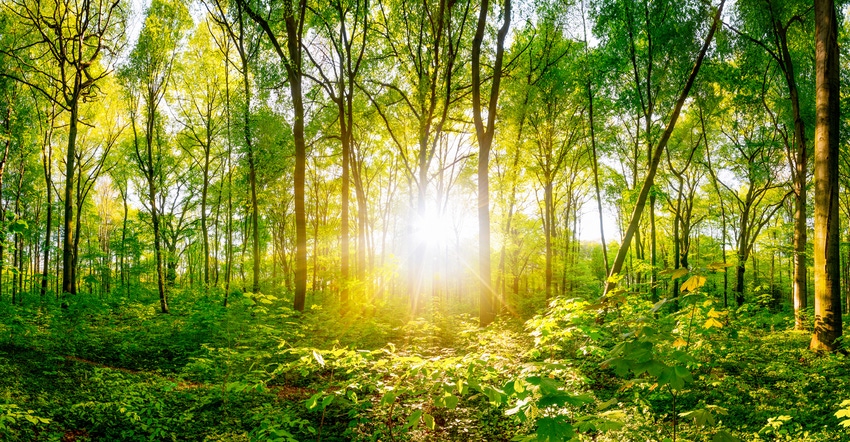February 9, 2018

As you begin to think about spring, now is a good time to consider planning where you would like to incorporate woody plants into your home landscape or windbreak, or for wildlife habitat.
Trees and shrubs can be purchased in several ways. Whether you buy bare root, potted or ball-and-burlap plants, upon arrival or at the time of purchase, make sure the plants are not damaged. Keep them in cool conditions, make sure the root systems are healthy and moist, and be sure to plant the trees before they break dormancy.
In planning for proper plant selection and siting, know how large the tree or shrub will be at maturity. One of the biggest problems I see is woody plants outgrowing their space. They are either too close to other plants or structures, or they overhang driveways or roads — or both. If you have a restricted planting space, choose plants that will stay short or have a columnar or narrow growth habit. Good examples would be frontier elm, Ware’s oak, chinkapin oak, English oak, crimson spire oak, Swiss stone pine, Alleghany serviceberry and inland shadbush.
What type of soil will the plant be growing in? Conifers, most oaks, maples, lindens and hickories do not like “wet feet,” meaning they do not do well on poorly drained soils. If your soil has a lot of clay, it will be slow to drain and may be prone to flooding, resulting in root rot and decay. Willows, river birch, bald cypress, swamp white oak, some elms, sycamore, and silver maple are good choices for wet sites.
Be sure to check soil pH and remember, most plants like a soil pH of 6.0 to 6.5. However, conifers, rhododendrons and azaleas grow best in soils with a pH of 5.0 to 5.5. If your soil pH is above 7 (neutral), the leaves of river birch, red maple and pin oak will appear yellow (chlorotic) because of lack of available iron and manganese.
Consider maintenance
Finally, think about plant maintenance and pest and disease issues. Try to avoid plants that require a lot of maintenance like pruning and watering, and are prone to chronic pests like Japanese beetle, apple scab and anthracnose.
Trees to avoid include some white and paper bark birches, and ashes, due to their susceptibility to bronze birch borer and emerald ash borer, respectively. Austrian and Scots pines are prone to many pests and diseases, and American and red elms are susceptible to Dutch elm disease. However, there are American elm cultivars (Princeton and Valley Forge) and Asian hybrids (accolade, commendation, Danada charm and triumph) that are tolerant and/or resistant to Dutch elm disease.
Fast-growing trees — such as willows, most elms and birches, maples, hackberry, sycamore, sweet gum and tulip tree — may seem desirable, but they will require more regular pruning to develop good tree structure.
Some tree species such as elms, maples and willows are water hogs and do not tolerate drought very well.
If possible, consider native plants that are well-adapted to your area. Select plants that provide wildlife food and demonstrate attractive winter attributes such as exfoliating bark and brightly colored fruit.
For more specific recommendations, consult The Morton Arboretum website.
Miller is a horticulture professor at Joliet Junior College in Joliet, Ill., and a senior research scientist in entomology at The Morton Arboretum in Lisle, Ill. Email your tree questions to him at [email protected].
About the Author(s)
You May Also Like




